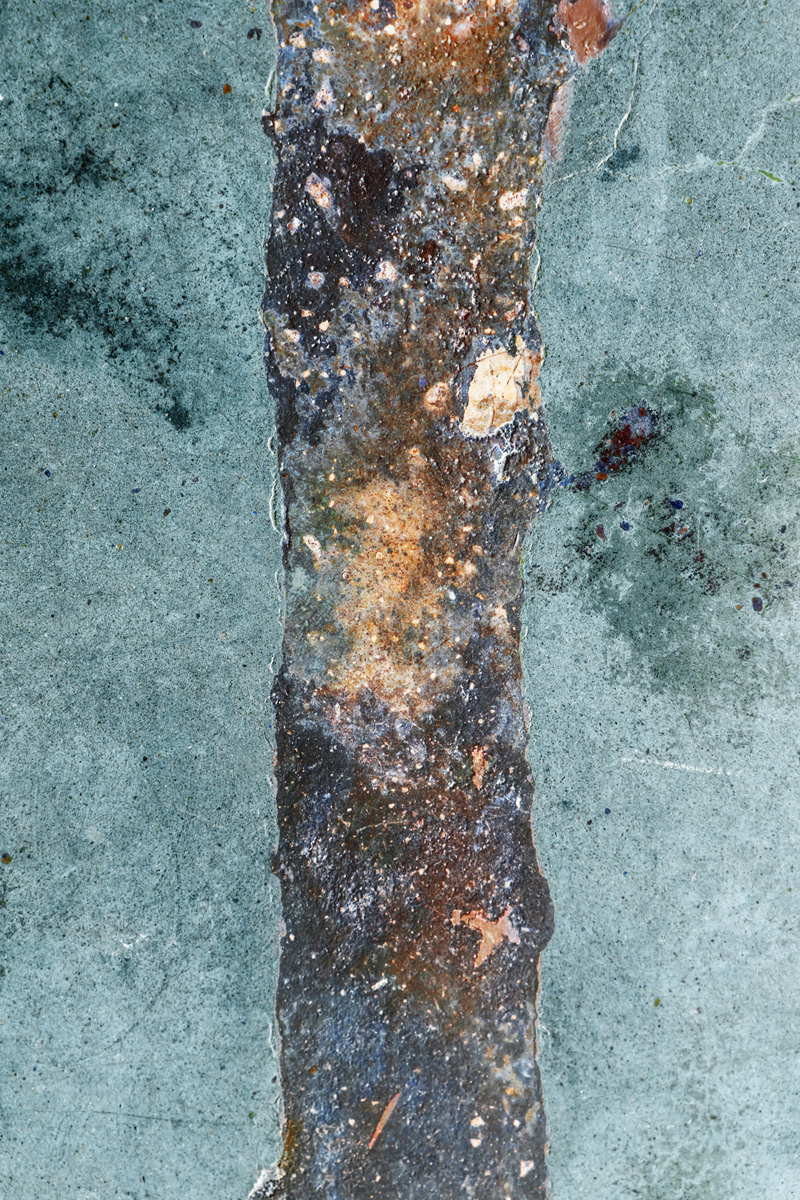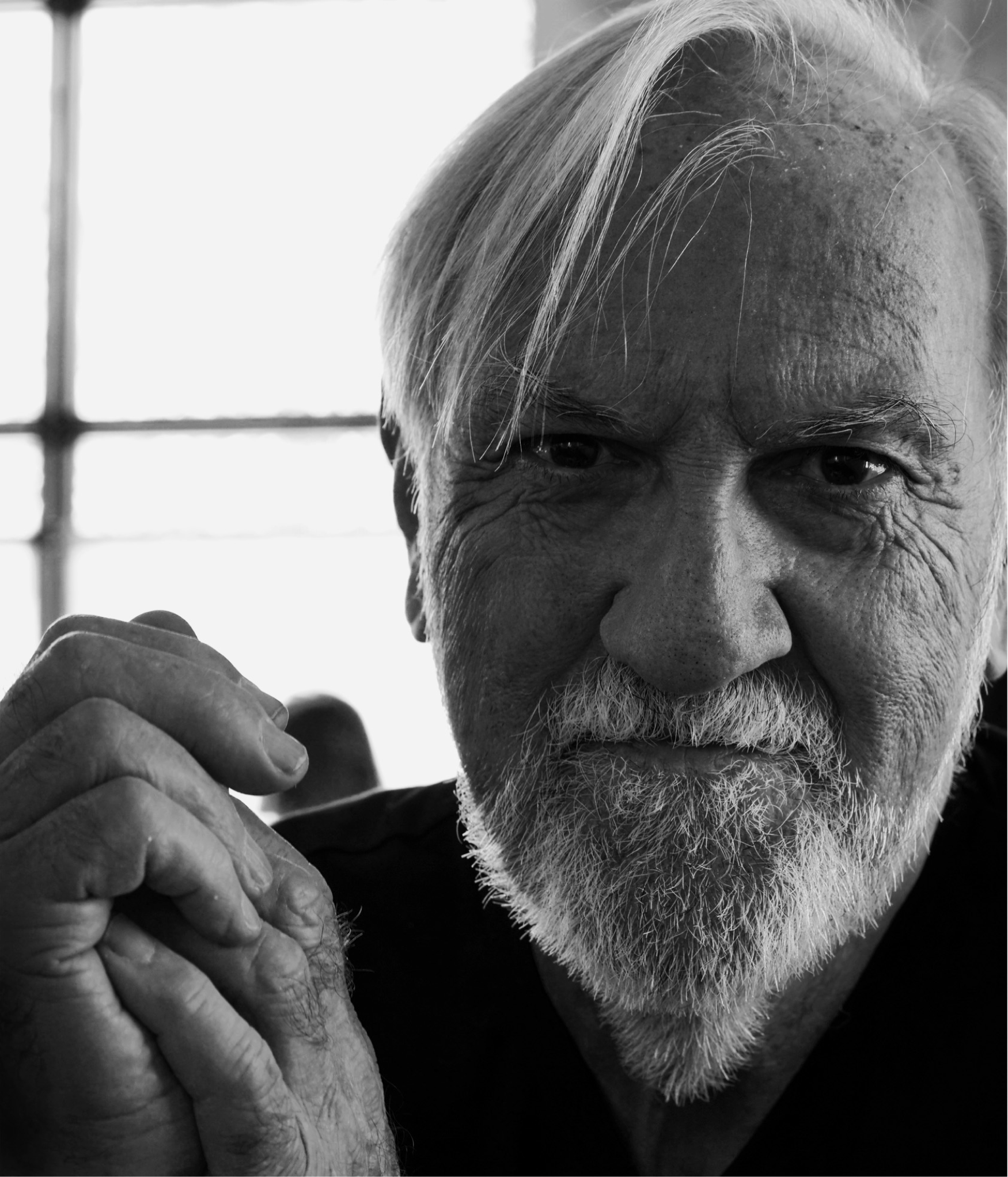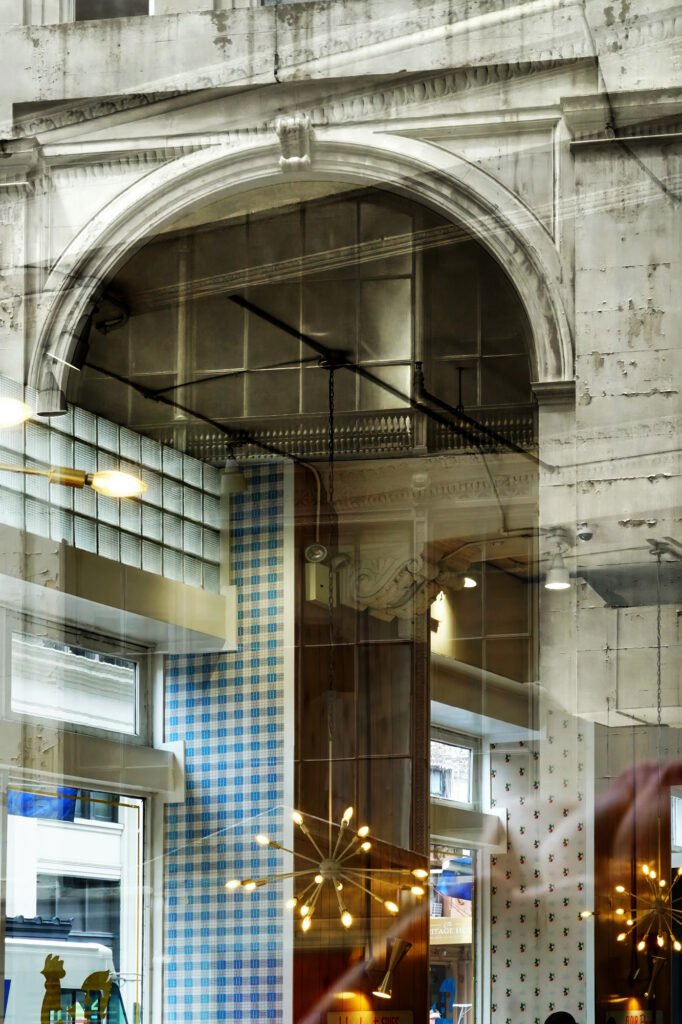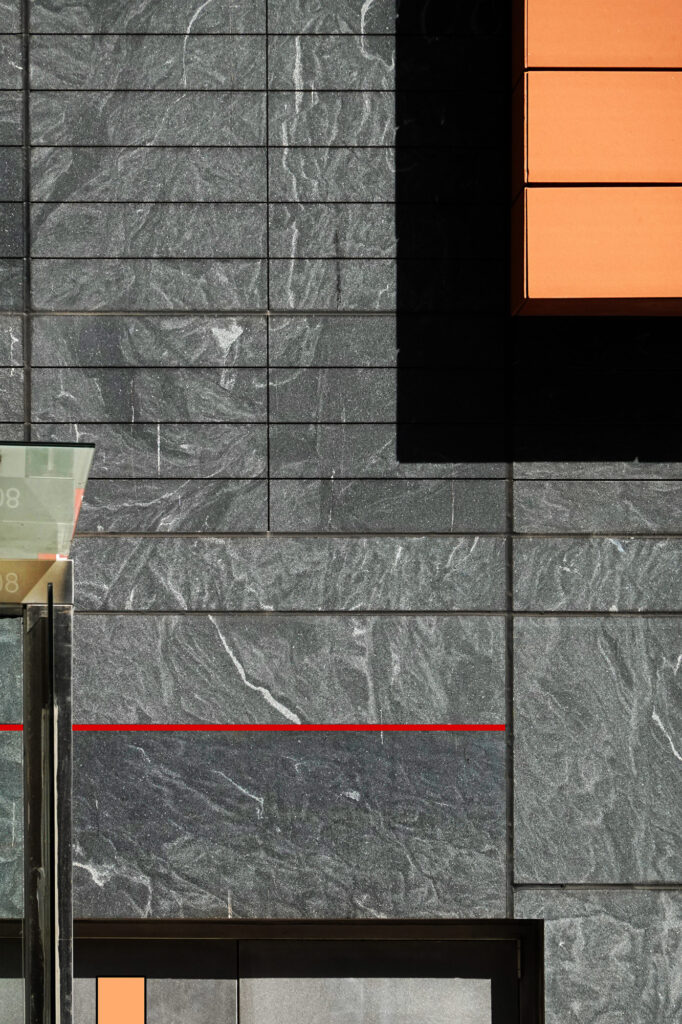My dear friend and colleague, Tony Vidler (1941-2023), was a photographer who suffered from the most serious case of GAS — Gear Acquisition Syndrome — I have ever encountered. He was a man of many facets, accomplished in most, but he just couldn’t resist the constant siren call of his local branch of Adorama. Tony Vidler had a major, MAJOR, major, Major, affliction of GAS
Tony and I met in 1973 when I joined the faculty of the Princeton University School of Architecture — moving there from Cornell. Though my same age, by reputation and his all-in-black attire, he posed a formidable, almost intimidating figure. But that dissipated quickly as I learned he was essentially a pussycat who loved to cook.
And boy could he cook! He had a way of roasting little chickens, cooking them forever it seemed, and certain to result in sawdust. But, however he did it, they were tender and juicy and with a crackling/crispy skin, defying all of culinary history in a couple of hours! And he knew serious cooking.
Collegiality
Teaching a design studio together with him in my first year at Princeton, we quickly became intellectual playmates and good friends. Later, in the few times we taught together, as we formulated unusual challenges for our classes, the experiences were magical, both for the students and the two of us, with an ineffable synergy running through the group’s efforts and accomplishments.
We had only one disagreement in fifty years—over a subject of architectural content. Tony held a profound belief that virtually all manifestations of architecture had a cultural origin. In essence, that to understand the physical presence of any work of architecture, you have to understand the social and cultural setting and circumstances in which it was created. I held a different view — that there are physical ‘universals’, akin to Platonic ‘forms,’ where visual and geometric phenomena are similar, if not the same. While there might be different cultural meanings in their usage, the premises, and principles of two- and three-dimensional relationships are consistent and hold true regardless of history and cultural circumstances.
Our difference came to light when I proposed to teach a course — An Introduction to Architectural Analysis from a non-historical perspective (which, since “History” is not my middle name, I am well-suited to do). We disagreed. But only once. Out of mutual respect and a realisation that neither of us would persuade the other, we dropped the subject. Sadly, we never brought it to another discussion, not even decades later. But I wish we had — if only to see if he remembered it. I doubt I could have persuaded him.

This article is illustrated by some of my photography in New York City
After class
We went fairly regularly, just the two of us, to a storied restaurant in nearby Trenton — the capital of the state of New Jersey — about ten miles away, a bittersweet conglomerate of glory and grunge, with a great industrial history. Trenton was home to the (John) Roebling Iron Works, where steel cables were manufactured for the Brooklyn Bridge and most of the early suspension bridges in the United States.
The restaurant was Pete Lorenzo’s, an Italianate steakhouse in a modest old mansion, where, it was said, all the important political decisions of New Jersey were made — or “influenced.” Lorenzo’s steaks were excellent and the French-fried potatoes supernal — perfectly crisp, perfectly fluffy! The waiters, appropriately attired in black and white, seemed like elegantly ‘refined’ thugs. Inexplicably, the restaurant had a surprisingly knowledgeable collection of many of the best California cabernet sauvignon wines, equally surprisingly, available at unimaginably reasonable prices… surprising because the prices for the food were comparable to New York City.
One outing to Lorenzo’s included Tony’s teen-aged son, Ben Vidler, visiting from London. Ben was attractive, with a somewhat androgynous-looking face, and had very long—to his shoulders—hair. After Tony and I had ordered our dinner, the waiter turned to Ben and asked, solicitously, “And what would YOU like to have, miss?” Without missing a beat, Ben raised his eyes slowly from the menu, lowered his voice to a modest ‘basso profundo’ and replied, “I’ll have the small sirloin as well.” Tony beamed with pride as the waiter, flustered as he realised his gaffe, muttered in assent and scurried off.
Sadly, and most devastating to Tony, Ben died of cancer almost ten years ago at the age of 49.
On to more important subjects… photography, what else?
Tony Vidler’s accomplishments in architectural, cultural and intellectual history and theory are legion — well-known and well-documented. However, little known, except to a very few, maybe only me, is Mr. V’s near encyclopaedic knowledge of cameras and photography.
He was an absolute gear-freak and, figuratively of course, I liked to say that he had owned every camera ever manufactured, many of them two or three times. It was nearly the truth. He had a walk-in relationship with the folks at Adorama Photo on 18th Street in Manhattan, which I presume was on his regular walking route from home at West 19th Street to Cooper Union. There he taught and for many years was Dean of the School of Architecture.
Regularly he would trade a recently acquired camera for a newer one, or for a “nostalgic” one that he had acquired and traded for just a few months or, at most, a year earlier. Occasionally, both. And somehow his wheeler-dealing never seemed to cost him any money. To aggrandise my own meagre transactional accomplishments in the Master’s eyes, pale in comparison to his own, I referred to them as “pulling a Vids.”
In short, Tony Vidler had a major, MAJOR, major, Major, affliction of GAS—Gear Acquisition Syndrome!
Most of his transactions involved Leicas. And I am certain that if there were such a thing, Tony would be the most decorated and heralded recipient of the O.B.E.—Oscar Barnack Enterprise—Award in the history of the marque.
No parts left over
Adding to the aura of his mystery, I remember from the early 1980s that occasionally he would disassemble sophisticated camera lenses to clean or repair them, using tiny little screwdrivers. Much more notably, he would reassemble them and have NO PARTS LEFT OVER.
Since he always owned between four and eight cameras and a dozen or so lenses, before every journey abroad he would have an anxiety-ridden time, sometimes extending over several weeks, trying to decide which ones to take with him. Occasionally, I would get two or three different travel-kit hypothesis emails in a single evening, to which I would always respond responsibly, and diligently, and (almost) always supportively.
We had frequent photo walks in New York City. Almost always on Sunday since parking in Manhattan is free on Sunday and I had an hour plus drive to the City from my home in Princeton, New Jersey. And, akin to Tony’s pre-travel-camera-selection-angst, before we set out from his loft, we would have about a half-hour of gear-layout-and-selection on the glass-topped Le Corbusier dining table.
Leicas — M6 (but just for show), M11, Q2, CL, SL, SL2, TL2, though not all at the same time. Olympus Pen-F, a favourite for a while. Sony a6500, but only for a while, and only in deference to our friendship and my commitment to Sony. He would ruminate. And we would discuss. And he would ruminate. Eventually, he would choose. And we would set forth, sometimes just to wander, other times to drive to a predetermined part of the City, park, and wander. Rarely did we photograph the same things.
Void
Tony’s departure leaves a void in everyone’s world, each with its characteristics. Recently, I purchased a new camera and lens that come close to fulfilling my personal dream, one that I had discussed with him for ages — to have the smallest, lightest, most potent single camera and lens to carry. I am sure he would be thrilled for me and would have interesting thoughts to offer. But I can’t tell him about it! That’s what happens when you lose a great friend.
A personal post-script — photographically, that is
My new camera/lens combo are the just released Sony A7CR and the superbly sharp Sony G 20-70mm zoom. I hate the schlep of heavy stuff and, even worse, carrying and changing extra lenses. The 60MP Sony powerhouse, at only 18 ounces (around 515 grams), enables me to crop-zoom to the approximate maximum equivalent image size of 175-200mm. When necessary, a further 2x boost using Gigapixel AI, another modern miracle, with no loss of detail or subtlety. To fund it all, I “de-accessioned” two cameras and three lenses (i.e. pulling a Vids!) and now I happily carry just under 1 kg of excellent gear. And I am as close to heaven as I am certain I will ever get to be.
So, you stodgy old Leica rangefinder guys should try a zoom lens (not a MATE or a WATE). And, the more up-to-date SL2 schleppers, should compare the 1.76 kg of the SL2 with 24-70 Vario Elmarit to the 990g described above. And don’t forget to figure in the weight of the shoulder harness required to support it — not to mention the cost of the physical therapy and orthopaedic surgeries afterwards.
Last, but not insignificantly, and just to beat a dead horse a bit more, note the name of the new Rock & Roll Strap attached to the SL2: The Weightlifter!
For your interest, I hope, I am including several of my photographs — New York City, and abstractions.
Cheers to all. And, in the spirit of Tony Vidler, go out and trade a few cameras.
Obituary of Tony Vidler
Jon Cheffing’s personal GAS (and gaiters)
A cup of coffee works wonders in supporting Macfilos
Did you know that Macfilos is run by a dedicated team of volunteers? We rely on donations to help pay our running costs. And even the cost of a cup of coffee will do wonders for our energy levels.













Dear Alan,
I stumbled on this and just want to thank you for a beautiful piece. It was a side of Tony I didn’t know but I always appreciated his gorgeous slides, almost always when I had him as a teacher, images he had taken.
Hope you’re well.
Mary McLeod
Dear Alan,
I stumbled on this and just want to thank you for a beautiful piece. It was a side of Tony I didn’t know but I always appreciated his gorgeous slides, almost always when I had him as a teacher, images he had taken.
Hope you’re well.
Mary McLeod
Lovely article, he sounds like a lovely man …… and you would be proud of me, having recently acquired a Sony A1 with the 24-70 and 70-200 GM2 zooms
I’m sorry for your loss. What a wonderful friendship and equally wonderful way to express it!
Last September I bought a used M11 from Adorama. The gentleman there (I forget his name, but he’s The guy) said that knew it was in great shape because he knew the person who traded it, which seemed unusual to me. I wonder…Well, I suppose I will never know, but it’s nice to think that there’s some possibility that my camera was owned by such an erudite and avid person.
Just assume it was Tony’s. A lovely idea…, and, though I’ve never thought of this before, there could be hundreds of Vidler Photo Alums in New York City.
Thanks, EVERYONE, for kind, thoughtful comments. The omnipresent difficulty that brings it all to mind repeatedly, is not being able to pick up the phone to call, or send the email…about a random amusement or thought.
Never met David English.
Great article! May I ask where you got the 640g for the Sony a7CR from? B&H says 515g (with battery) which would make it lighter than even the black M11 (530g with battery).
Thanks! Being in the USA, I wrote either 17 or 18 ounces, obtained also from B&H; most likely, a British gremlin made a slightly inaccurate conversion to metric.
British gremlin strikes again… I will check later an alter the article to accord with the facts. Mike
You are a most honorable (I know, I know, it should be spelled honourable) gent!!!
The British Spelling Committee will cut you some slack on this occasion.
I always think of you as the British Gremlin!
Thanks Alan for this lovely article about Tony. I see, to my shame, that I missed Mike’s article about Tony’s passing and did not comment there. Thanks to Mike, I exchanged emails with Tony on a number of occasions and we discussed a variety of esoteric cameras, including a British made Kershaw camera that had been the subject of a special offer from Kelloggs, German Welta and Contessa folding cameras, the former a rare folding TLR, and also about Russian cameras and where to find interesting examples in St Petersburg. As wide a range as anyone could hope for. I always found Tony’s emails to be lively and stimulating. I am sorry that I never got to meet him, as you have indicated that he was exactly the same in person. As for that GAS thing, people like me just call that ‘collecting’.
Thanks once again.
William
Dear Alan, a very touching text, thank you so much for sharing your memories and feelings. I am very sorry you lost such a wonderful friend. I hope you can find some consolation in the thought that you had the luck to meet him in the first place. All the best for you, Jörg-Peter
I believe a friendship such as yours is well worth memorializing; relations with professional colleagues can often devolve into worry over the state of the Department/College/Profession.
That you could maintain the friendship despite your political difference on choice of cameras — well, good photography abides, while cameras come and go (especially for Vidler!)
I have re-read four times now, I am sorry you lost a great friend, you have many memories to cherish and here’s hoping you get to find another friend to share those memories, sincerely sorry for your loss.
What a lovely story! You really feel that Tony was someone you would want to meet and the discussion would be engrossing regardless of topic. Collecting camera equipment and being able to disassemble and reassemble complicated equipment is a wonderful skill. A bit like the people who can do the same thing with mechanical watches. That puts you well beyond the IKEA. assembly instructor class!
When I lived in Milan I had a friend a bit like Tony who was restoring a “Topolino” and a 500 Giardinera. We regularly went to car auctions and flea markets looking for needed parts to complete the restoration. It was if he had a photographic memory of the assembly instructions for both cars and knew exactly the differences between the “a” version and the “b” version of the required part and which one would fit his car.
Tony clearly had similar skills: something I admire and simply lack. It’s good for the soul to spend time with people like this.
Great story thank you! Did you two ever get a chance to tie up with David English?
What a great piece of writing. I thoroughly enjoyed it and what a great tribute to a friend. ,🙏🏾